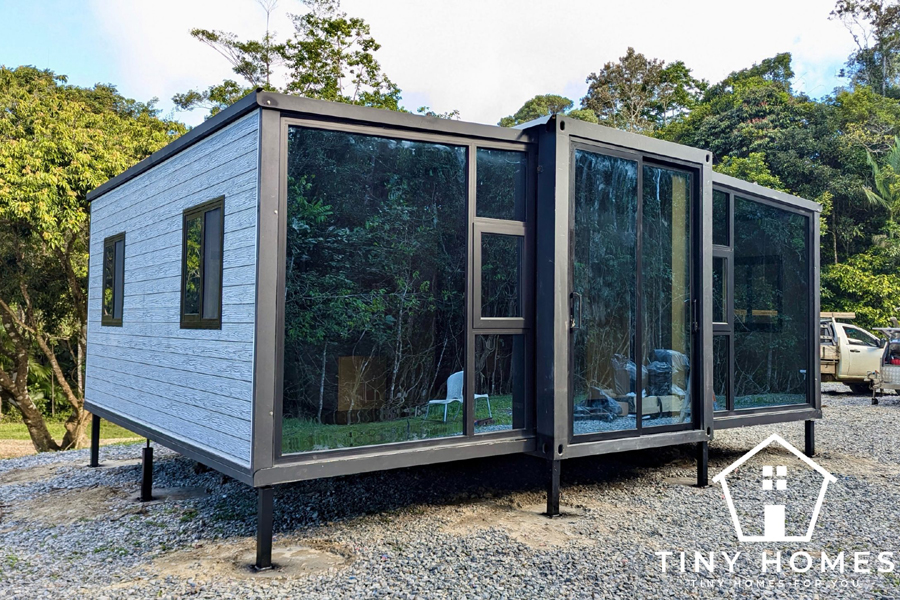If you’re considering building a home in Australia, you’ve likely come across the term “kit homes”. With housing affordability and sustainability taking centre stage, many are rethinking the traditional home-building process. But how do kit homes really compare to traditional builds? Which offers better value, flexibility, and long-term benefits?
What is a Kit Home?
A kit home is a prefabricated home in which most of the components, such as walls, roofing, flooring, frames, and more, are manufactured off-site and delivered as a flat-packed “kit.” Homeowners or builders then assemble the kit on-site.
These homes are often more affordable and faster to build than traditional homes and are increasingly popular among those looking for a simplified building process.
What is a Traditional Build?
A traditional home build involves constructing the house on-site from the ground up using individual materials and trades. It allows for more customisation and architectural variation but tends to take longer and cost more.
This is the conventional route many Australians have followed for generations.
Kit Homes vs Traditional Builds: Key Differences
|
Feature |
Kit Homes | Traditional Builds |
|
Cost |
Generally lower | Generally higher |
|
Timeline |
Shorter (3–6 months) | Longer (6–18 months) |
|
Customisation |
Limited (but improving) | Extensive |
|
DIY Friendly |
Yes, for owner-builders | Not typically |
|
Sustainability |
Often energy-efficient | Depends on design/materials |
| Financing |
It can be trickier to obtain |
More financing options |
The Pros of Kit Homes
Affordability
Kit homes are known for their cost efficiency. The prefabricated nature reduces labour costs and allows for bulk material savings. Depending on the size and finish, prices can start from $30,000 to $150,000+, much cheaper than traditional homes.
Faster Construction
Many kit homes can be completed in under six months. With structural elements pre-made, bad weather and scheduling delays have minimal impact.
DIY-Friendly
If you’re a capable owner-builder, you can reduce costs further by assembling the home yourself or hiring trades as needed.
Eco-Friendly Materials
A large number of kit homes use sustainable timber and offer options for solar power and rainwater harvesting, lowering your carbon footprint.
Fixed-Price Contracts
Many kit home companies offer transparent pricing. This helps avoid budget blowouts, a common issue with custom builds.
Explore a range of innovative options at Tiny Homes 4U.
The Pros of Traditional Builds
Customisation
From architectural design to interior layout, traditional builds offer endless opportunities for personalisation. Perfect for those with a clear vision.
Prestige and Perception
Traditional homes may be viewed as more premium or valuable in some markets. This can influence resale value and buyer interest.
Flexible Financing Options
Banks and lenders are more familiar with traditional builds and offer a wider range of financing products, including construction loans.
Access to Government Grants
Many grants or incentives (like First Home Owner Grant) are easier to access with conventional builds.
No Assembly Required
You’re not expected to be handy. Builders manage the entire project, from the slab to the final coat of paint.
Cons to Consider
Kit Homes:
• Financing can be more complex if banks are unfamiliar.
• Resale value may vary based on buyer perception.
• Limited choice in materials and finishes.
Traditional Builds:
• Higher construction costs due to labour and time.
• Delays are common due to weather, trades, or approvals.
• Can be mentally and emotionally taxing for new owners.
If you opt for a kit home or a traditional build, the best choice matches your lifestyle, timeline, and long-term goals. Kit homes provide cost savings and efficiency, while traditional homes offer greater flexibility and prestige.
If you’re looking for a smart, sustainable way to build, kit homes are no longer a compromise; they’re a legitimate and often superior option.

